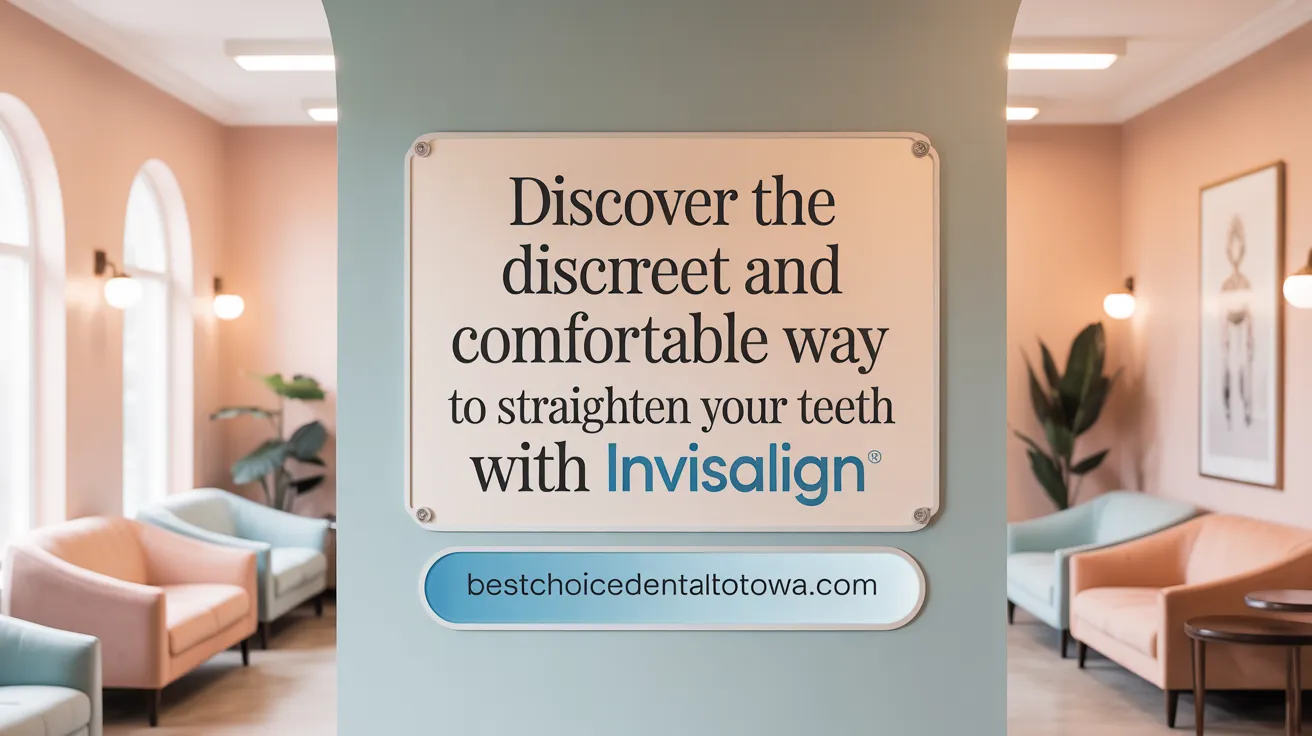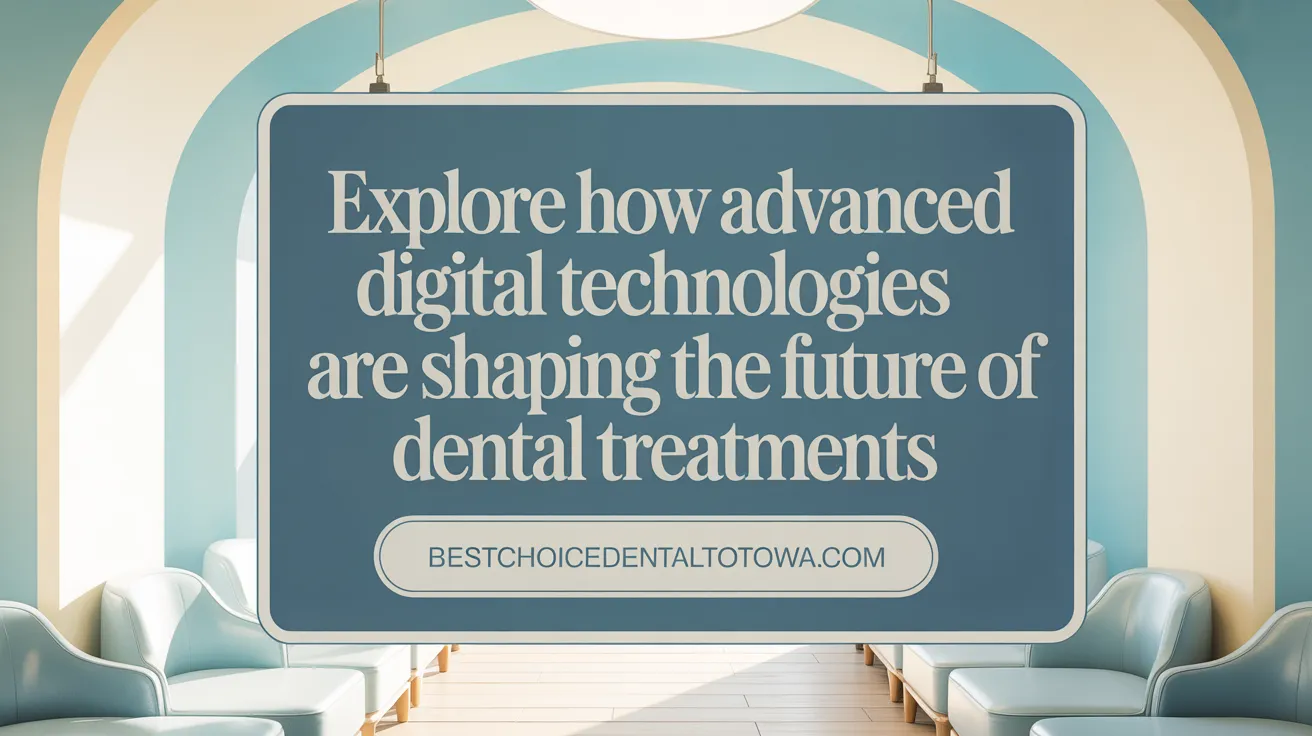Introduction to Cutting-Edge Dental Innovations
Dental technology has undergone significant transformation, offering patients faster, more precise, and aesthetically pleasing treatment options. Two prominent advancements leading this change are CEREC same-day crowns and Invisalign clear aligners. These technologies not only improve the patient experience but also enhance treatment outcomes through digital precision and convenience. This article explores the features, benefits, and processes of CEREC crowns and Invisalign orthodontics, shedding light on how they revolutionize restorative and orthodontic dental care.
CEREC Crowns: Fast, Durable, and Aesthetically Superior Restorations

What is CEREC technology and how does it work?
CEREC stands for Chairside Economical Restoration of Esthetic Ceramics. This advanced dental technology enables dentists to design, fabricate, and place ceramic crowns in a single appointment. Utilizing digital impressions and CAD/CAM (computer-aided design and computer-aided manufacturing) systems, CEREC captures a precise 3D image of the patient's tooth. The crown is then digitally designed and milled from a solid ceramic block right in the office, eliminating the need for traditional molds and multiple visits.
Materials used for CEREC crowns and their benefits
CEREC crowns are crafted from high-quality ceramic materials such as feldspathic porcelain and lithium disilicate (e.max). These materials offer several advantages:
- Natural appearance: They closely mimic the color and translucency of natural teeth without a metal core, providing a seamless, esthetic look.
- Durability: The ceramics are strong enough to endure normal chewing forces, making them suitable for both front and back teeth.
- Biocompatibility: Being metal-free, these ceramics reduce allergy risk and are gentle on surrounding gum tissues.
Learn more about the materials and benefits of CEREC crowns.
How do CEREC crowns compare to traditional crowns?
Traditional crowns typically require multiple dental visits, involving physical impressions and temporary crowns while waiting for lab fabrication. In contrast, CEREC crowns streamline the process into a single session. The benefits include:
- Time Savings: Crowns are designed, milled, and placed in about 1-2 hours.
- Improved Fit: Digital impressions enhance precision, reducing adjustment needs.
- Convenience: No temporary crowns or messy materials required.
Though traditional lab-made crowns offer a wider range of materials like metal alloys and porcelain-fused options, CEREC crowns provide strong, esthetically pleasing results with comparable longevity.
Patient benefits in convenience and comfort
The use of digital scanning replaces uncomfortable traditional impressions. Patients appreciate the reduced chair time and the elimination of temporary crowns, which often cause discomfort or may fall off. The entire restoration process is more comfortable, efficient, and less intrusive, allowing patients to leave the appointment with a permanent, customized crown.
Longevity and care recommendations for CEREC crowns
When properly maintained, CEREC crowns typically last between 10 and 15 years. To maximize their lifespan, patients should follow good oral hygiene practices, avoid biting on very hard objects, and attend regular dental check-ups. With these measures, CEREC crowns provide durable and reliable tooth restoration.
Invisalign Clear Aligners: Discreet, Comfortable, and Efficient Orthodontic Treatment

How does Invisalign work to straighten teeth?
Invisalign straightens teeth using a series of custom-made, clear, and removable aligners. These aligners are crafted from SmartTrack® thermoplastic material, which is designed for comfort and flexibility. Each aligner gently moves teeth incrementally according to a personalized plan created from a digital 3D scan of the patient's teeth. Learn more about the Invisalign clear aligners technology.
What is the typical treatment process for Invisalign?
The treatment starts with a consultation and a 3D digital scan of the teeth to map out a detailed orthodontic plan using advanced software. Patients then receive a series of custom aligners that they wear and switch approximately every one to two weeks. Throughout treatment, regular check-ups ensure progress is on track and adjustments are made if needed. Discover the full Invisalign treatment process.
What are the advantages of Invisalign compared to traditional braces?
Invisalign aligners offer several benefits over traditional braces:
- Nearly invisible appearance for discreet treatment.
- Removability allows eating, drinking (except water), and easier oral hygiene without restrictions.
- Smooth plastic construction reduces irritation compared to metal brackets.
- Often requires fewer dental visits.
- Treatment can be up to 50% faster in certain cases.
Explore the advantages over traditional braces and the pros and cons of Invisalign braces.
How long does Invisalign treatment usually take?
Treatment duration generally ranges between 6 months and 2 years depending on complexity. Many patients observe visible improvements within a few weeks and can complete treatment faster than with traditional braces. Read about Invisalign treatment times and faster smile transformation with Invisalign.
What are the patient maintenance requirements during Invisalign treatment?
Patients need to wear the aligners for 20 to 22 hours each day, removing them only for eating, drinking other than water, and oral hygiene. Regular cleaning of the trays by brushing and soaking is important, along with strictly following the scheduled aligner changes to maintain effective tooth movement. More details on maintaining Invisalign aligners and cleaning Invisalign trays are available.
Advanced Digital Dental Technologies Supporting CEREC and Invisalign Success
What digital technologies support CEREC crown production?
CEREC crowns rely on advanced digital technologies for swift and precise dental restorations. A high-resolution intraoral camera captures detailed 3D images of the tooth, replacing traditional impressions and enhancing patient comfort. The digital model is then designed with specialized CAD software, allowing exact customization. Finally, a CAM milling unit fabricates the crown onsite from a solid ceramic block in approximately 15-30 minutes, enabling same-day treatment with excellent fit and aesthetics.
How does advanced technology enhance Invisalign treatment planning?
Invisalign treatment begins with a digital 3D scan of the teeth using systems like the iTero scanner. This data feeds into ClinCheck® software, which maps out a personalized treatment plan by simulating each incremental tooth movement. Aligners are then custom-produced using 3D printing technology from SmartTrack® material, ensuring comfortable, effective orthodontic care with a clear, discreet appearance.
What additional dental technologies improve diagnostic and treatment outcomes related to these procedures?
Several cutting-edge technologies complement CEREC and Invisalign treatment. Cone Beam Computed Tomography (CBCT) delivers comprehensive 3D images of teeth and jawbone structure with reduced radiation, aiding precise surgical and implant planning. Intraoral cameras provide real-time visualizations to improve patient understanding and diagnosis. Laser dentistry facilitates minimally invasive soft tissue procedures with less pain and faster recovery. Digital X-rays produce enhanced images instantaneously while lowering radiation exposure compared to traditional films.
These integrated digital advancements significantly increase the accuracy, convenience, and success rates of modern dental treatments like CEREC crowns and Invisalign aligners, enhancing patient outcomes and care experiences.
Patient-Centered Advantages and Considerations of CEREC and Invisalign

How do CEREC and Invisalign improve patient comfort and convenience?
Both CEREC and Invisalign technologies significantly enhance patient comfort and convenience by streamlining treatment processes. CEREC allows same-day dental crown creation and placement, which eliminates multiple dental visits and avoids uncomfortable temporary crowns. This technology uses digital impressions rather than traditional molds, reducing discomfort during the procedure.
Invisalign offers removable clear aligners that patients can take out while eating, brushing, and flossing. This flexibility promotes better oral hygiene and fewer dietary restrictions compared to traditional braces, increasing overall comfort and lifestyle compatibility during treatment. Learn more about the Invisalign treatment process.
What aesthetic benefits do these advanced treatments offer?
CEREC crowns are crafted from high-quality tooth-colored ceramics without a metal core, closely resembling natural teeth. This results in beautiful, natural-looking restorations that blend seamlessly with the surrounding smile.
Invisalign aligners are nearly invisible clear trays, allowing patients to straighten their teeth discreetly. The transparent design avoids the visible metal brackets and wires of traditional braces, offering a more confident and aesthetically pleasing orthodontic option. For detailed benefits, see Invisalign clear aligners technology.
Are there limitations or specific cases where these technologies may not be suitable?
CEREC crowns may not be ideal for complex dental cases requiring subgingival margins or specialty materials not available in-office. Additionally, some dentists might not offer CEREC due to equipment requirements. For more on case selection and technology limits, refer to CEREC technology in dentistry.
Invisalign is best suited for mild to moderate orthodontic issues. Severe crowding, large gaps, or complex bite problems may require traditional braces, which are better at handling intricate tooth movements. More information about Invisalign treatment suitability can be found at How Invisalign works.
How do costs and insurance coverage impact patients choosing these technologies?
CEREC crowns generally cost between $500 and $2,000 per tooth. Insurance coverage varies, which can influence affordability. See Costs of CEREC crowns and insurance for further details.
Invisalign treatment typically ranges from about $3,500 to $8,000. Some insurance plans offer partial coverage, and many providers present financing options to ease payment. Patients should consider both upfront and long-term costs when deciding on these advanced treatments. For more on Invisalign cost and financing, visit Invisalign treatment cost and insurance.
By focusing on patient comfort, efficient treatment, and natural aesthetics, CEREC and Invisalign provide modern dental solutions while requiring consideration of case suitability and financial aspects.
The Future of Dental Care: Integration of Advanced Technologies

How are technologies like CEREC and Invisalign shaping modern dental care?
Technologies such as CEREC and Invisalign are revolutionizing dental care by fostering a digital-first approach. CEREC enables the design, milling, and placement of ceramic crowns in a single visit, eliminating multiple appointments and the discomfort of traditional impressions. Invisalign uses advanced 3D imaging and patented SmartTrack material to create clear, removable aligners that gradually straighten teeth with precision and comfort. Together, these innovations reduce clinic visits, enhance treatment accuracy, and significantly improve patient convenience and experience.
What operational and environmental benefits do these technologies provide?
The adoption of digital workflows with technologies like CEREC and Invisalign brings notable operational efficiencies. Digital impressions replace traditional molds, minimizing the use of impression materials and reducing waste. In-office milling of crowns cuts down shipping needs and shortens treatment time, lowering the carbon footprint. These streamlined processes enable dental practices to deliver services more sustainably while maximizing chair time and minimizing patient wait times.
How do these technologies empower patients?
Advanced dental technologies empower patients by increasing transparency and control over their treatments. Digital imaging and treatment simulation allow patients to visualize results before procedures begin. Same-day crowns and fast Invisalign aligner changes offer quicker restorations and orthodontic improvements, reducing discomfort and temporary solutions. Additionally, customizable treatment options accommodate individual lifestyles and aesthetic preferences, enhancing satisfaction and engagement in oral health management.
Embracing Innovation for Healthier, Confident Smiles
CEREC crowns and Invisalign represent significant advancements that have transformed dental restorations and orthodontic treatment by harnessing digital technology for enhanced precision, efficiency, and aesthetics. These innovations reduce treatment times and improve patient comfort, allowing individuals to achieve healthier and more confident smiles with minimal disruption to their lives. As dental technologies continue to evolve, integration of digital workflows and patient-centered approaches will further elevate the standards of care and offer increasingly personalized solutions. Embracing these technologies means accessing state-of-the-art dentistry that prioritizes convenience, accuracy, and lasting results.
